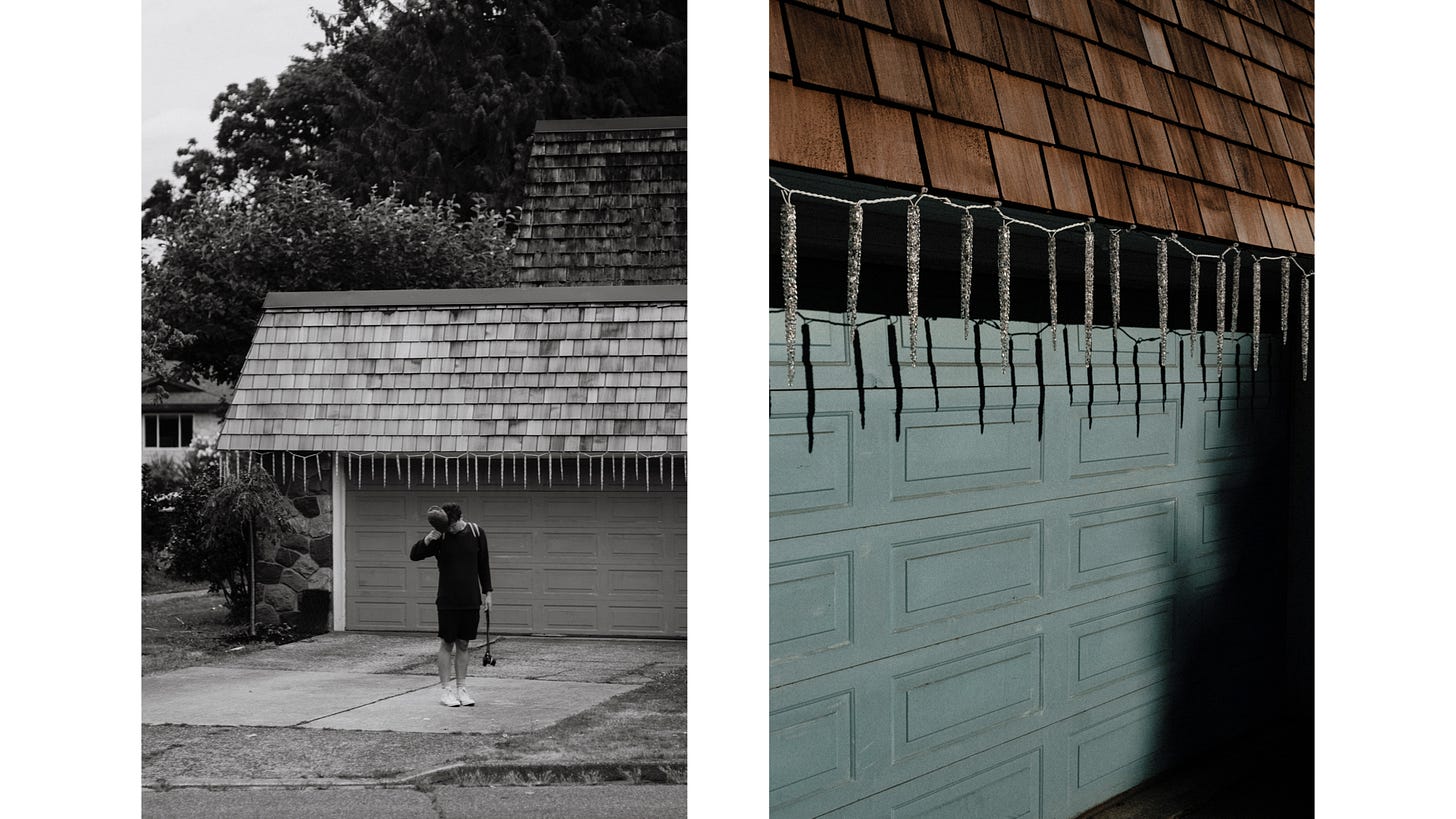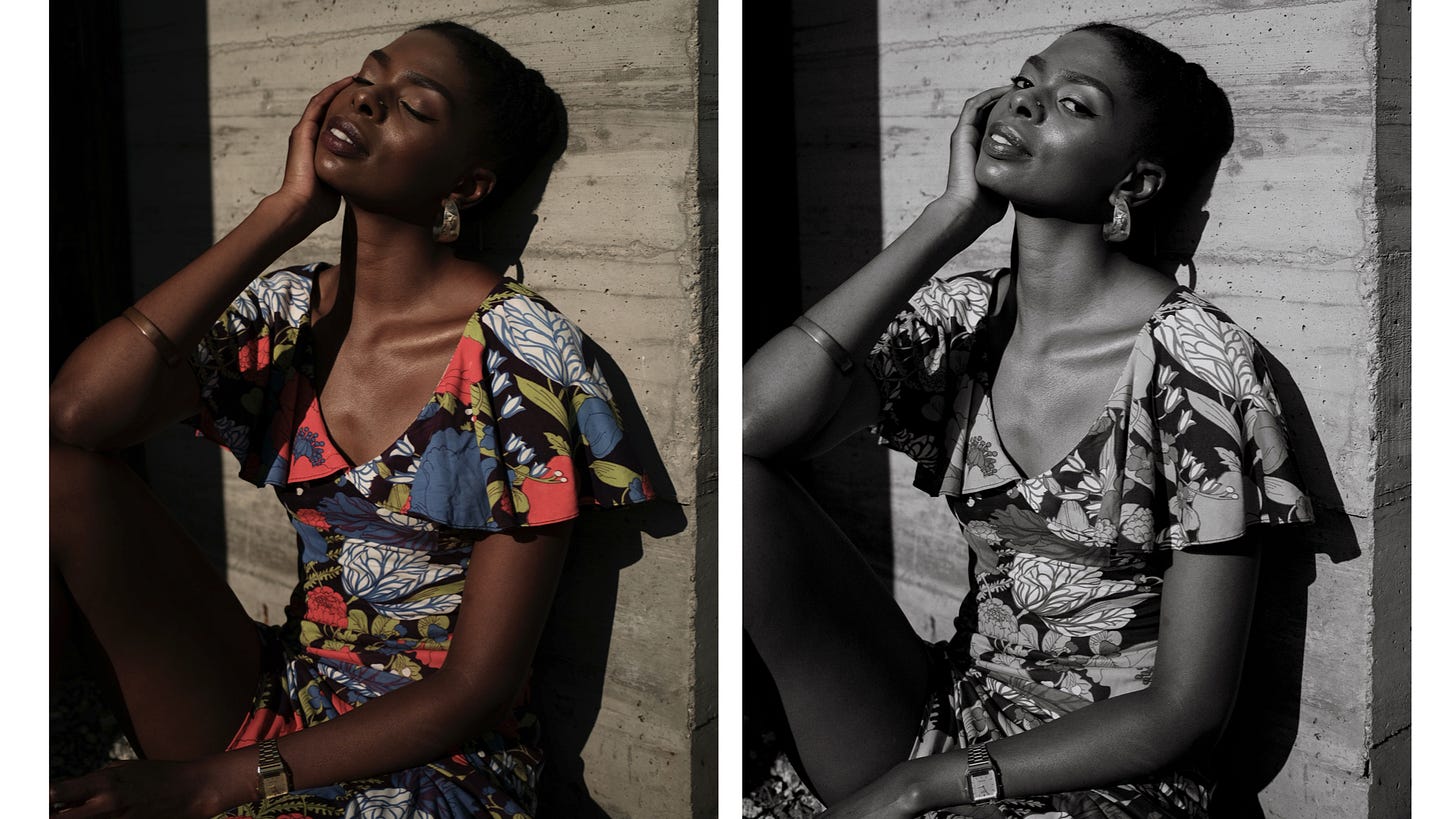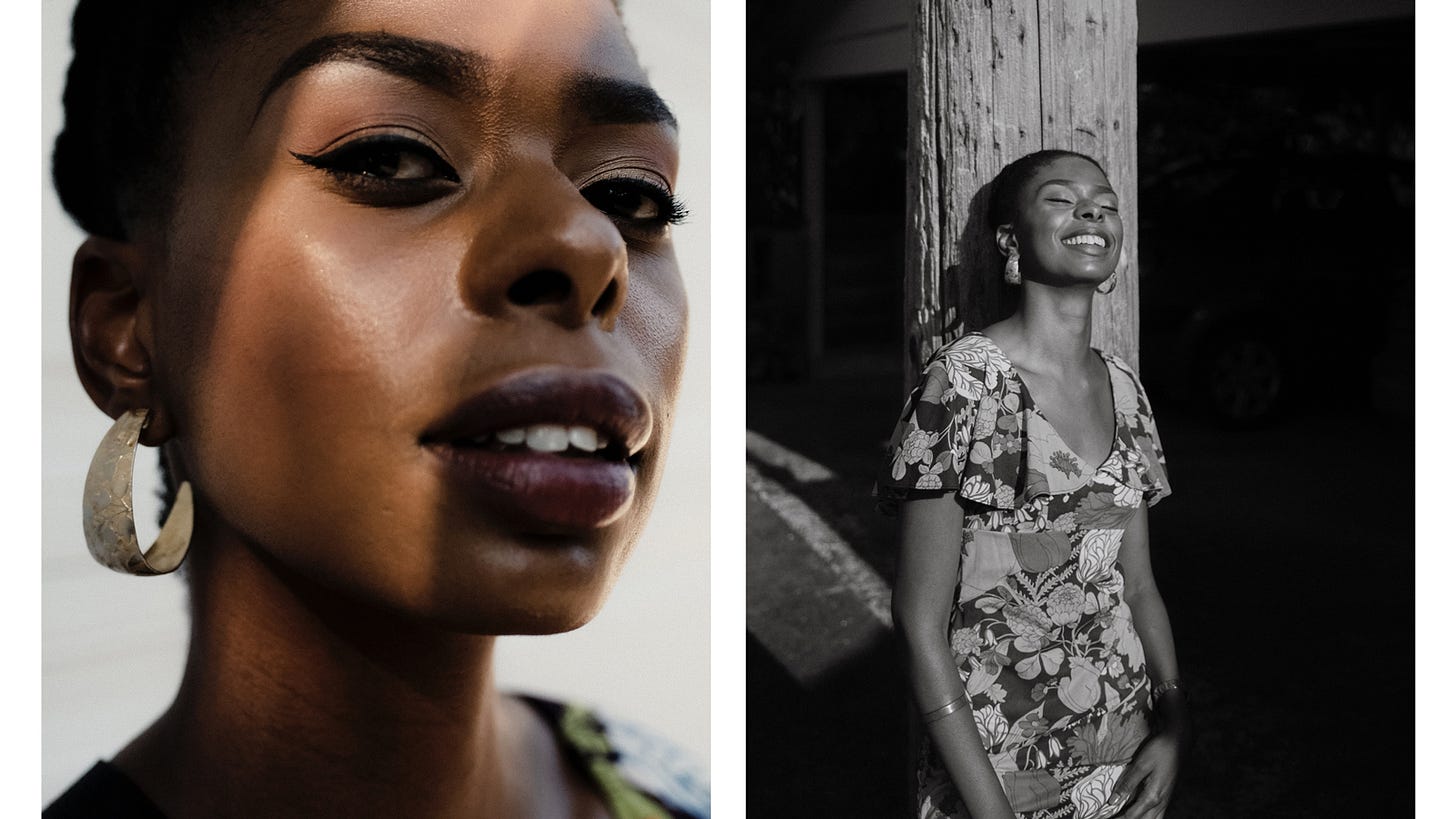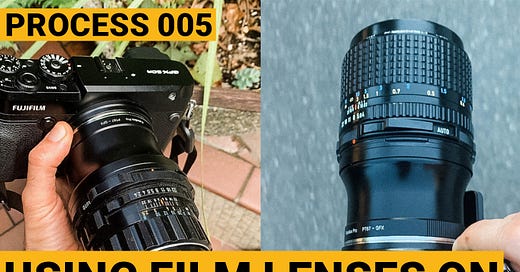Process 005 ☼ Using Film Lenses On A Digital Camera
Putting forty year old Pentax lenses on a new Fujifilm GFX 50R
Dear Friends,
This week we’re diving right into one of my favorite recent test shoots. I paired a forty year old lens with a brand new digital medium format camera. Wha happened?* I will explain.
Alright -
Test shoots, how do they work*?
When I am not shooting personal or client work, I love doing test shoots. What am I testing exactly? Oh boy, so much! New cameras, old cameras, expired film from 1986, people I have streetcast, new faces from modeling agencies, make up artists and assistants to collaborate with, studios to try out, and the list goes on.
Test shoots are about play, experimenting, and learning. It’s a low pressure environment to pick up new skills and gain experience that will serve me later on during client shoots and other serious projects.
This particular test shoot revolves around my never-ending quest to increase the aesthetic consistency between my analog and digital work.
Film versus Digital
I’ll admit, that header is a bit misleading. I am not one of those militant “analog or nothing” photographers. Most of my client work is shot digitally, while most of my personal work is shot on film.
Digital gives us certain advantages that are especially useful for commercial work. The turn around time is faster, and because there is no delay in seeing the images it’s possible for the client to be on set. When managed well this means we have a better chance of getting all the shots we need just right.
Those advantages aside, digital can end up looking a bit too perfect, too sharp, and too clinical at times. So, I am always working on ways to marry the advantages of digital with the tactual charm of analog. (It’s a word, I looked it up.)
Enter Jerry Julien of Fujifilm North America. During my last week in Vancouver he kindly lend me a Fujifilm 50R medium format digital camera and a Fotodiox adapter so I could mount my forty year old Pentax lenses on this modern camera body. Does this MacGyvered set up look a little crazy and inconvenient? It sure does!

But let us not judge a book by its cover and instead go straight to the results.
These first few images are from a photo walk with my pals Connor, Alex, and Devan. These were shot using the 55mm and 105mm Pentax 6x7 lenses and various film emulsionss, without much editing. Pretty much straight from the camera.

Lovely black and white tones, patterned after Fuji’s own Acros film stock and I could even see someone mistaking it for Ilford HP5. The camera exposed perfectly for highlights, the grain feels organic, and while the depth of field drop off isn’t as dramatic as on a medium format film camera it does look good.
Next up are some images shot at a high f stop of around f11-16, so everything is in focus all at once.

Everything here came out sharp, but not too sharp. It feels like real life, rather than looking at some ultra HD TV program. The camera allowed the Pentax glass to render in an pleasantly organic way, close to how it would have on film. It might be a tad more contrast-y, but not in a distracting way.
Next up, playing around with some reflections.

Notice how the grain in color feels slicker than in black and white, but without being too harsh or inorganic. It looks lovely all around even if it’s not quite as close to the analog feeling of the previous shots. This was a challenging shot to get the focus right for because of all the distortion in the reflections, which is when the camera’s focus peaking feature came in very handy.
Encouraged by what I had seen so far, I scheduled an editorial fashion shoot with my friend Chisomo. We decided on a classic “Aunt Viv” color palette* and sauntered through the same streets where I shot the work for my upcoming Notice book.

Well gosh darn color me impressed! Look at those tones! These were shot with the 55mm lens, which on the Pentax is the full frame equivalent of 28mm (very wide) but on the GFX lands around 44mm (much less wide, and therefor slightly more versatile).
Again this feels perfectly sharp to me without being too sharp, and the first shot has a lovely analog-esque drop off from subject to background.
Next, a little less editorial, a little more fashion.

I love how the camera handled Chisomo’s dress and skintone, both in color and black and white. We were shooting in harsh daylight and at no point did I worry about blowing out highlights or losing detail. I underexposed ever so slightly to create the deeper shadows which came out exactly how I expected, without the shadows getting muddy.

To close out I went for a very close portrait that one might take with a bellowed camera like a Mamiya RZ, and a simple joyful editorial portrait more in the 35mm range. Again the focus drop off isn’t quite as fast as it would be with an medium format film camera shot wide open, but I rarely shoot wide open anyway so that’s not a problem.
Overall Impression
The classic Pentax rendering came out pretty faithfully to what I am used to with my analog camera. It’s not exactly the same, but it certainly approximates the feeling better than any digital camera I’ve shot with before. And that’s with minimal editing, which is a big plus. The less I have to edit, the more time I have to shoot more images. (Full disclosure: I am currently working on something called a work/life balance and soon I hope to be able to say: the less time I spend editing, the more time I have for spending time with loved ones, long walks in the park, and exercise.)
Some might bristle at the size and weight of this camera set up, but walking the streets with a Pentax 67 body and lens combo means that I carry a heavy load already. The GFX body was much lighter than I expected, so the added weight of the adapter and lens really just evened it out to about what I am used to. If I’d use a native lens instead, the whole thing would feel very light for a medium format camera.
Is this the fastest camera ever? No, definitely not. If you’re shooting a sports event, just bring a DSLR instead, but for most anything else I found it plenty fast at three shots per second. I shoot manually anyway so speed is not much of a priority for me.
Speaking of, one of the aspects of this camera that I enjoyed most was how it slowed me down in a way that an analog camera does as well. I enjoy the intentionality of calmly framing my shot and getting it right in-camera rather than the “I can fix it in post” tendency digital photography can bring out in us at times.
One last thing and it’s a big one. After shooting with this camera for a while I felt a calm confidence that the camera would get the exact shot I was exposing for. The electronic viewfinder was a delight and never was I surprised after the fact with a metering or focusing mishap. I would do the work to set up the shot, and the camera made sure to follow suit and do exactly as told, reliably.
There was really only one main problem with my experience shooting the GFX 50R. The fact that I had to give it back to Jerry. I get it, it was a loaner, but now that I’ve had a taste I could see many great opportunities to add this camera into my work flow for both commercial and personal work.
Alright, that’s it for this week. Thank you for being here and being you.
Excelsior,
W
PS Voluntary Assignment: Think of a photography skill you want to learn or get better at and schedule a test shoot. E.G. Don’t know how to use strobes? Set up a test shoot with a friend who does know. Not yet confident posing a model? Ask a friend to model for a test shoot! Feel free to send me the results.
PPS * Secret Contest: the first person who catches the three pop culture references in this letter and sends me their favorite related animated gif gets a secret prize.
Process readers on why photography is important to them:
“I used to believe in creating photos to showcase imaginative universes and ideas, but that has evolved a little bit for me. I now work under the idea that photography is a tool to show what is possible.” — Tim Lampe (Atlanta, USA)
“Because it helps me process and understand myself, my emotions, the world around me. It is something I can use to tell stories - make people feel something, take them on a journey - as well as something I can use to find my true self, to become a better person, and understand my place in the world.” — Sam Tanner (New Zealand)
If you haven’t written me yet with your answer and feel the urge, please do. It’s a great way to get to know each other, and I like hearing from you. Just hit reply or send to hello@wesley.co
Process is a bi-weekly letter from Wesley Verhoeve about photography and finding your voice.
Until next time, follow along at @Wesley.
If you enjoyed this note I really appreciate you sharing this newsletter with others. Let’s grow our community.



I enjoyed my time with Pentax, but it was just part of the incremental advance of my skill and expectation. I use the Fuji now, and when I go back to the Pentax I am awesomely underwhelmed by the lack of resolution, detail, and micro-contrast. It bugs me in the way that looking at old low resolution TV sets running VHS video tapes does. It's because I've seen the new, and what's possible with the new. The Pentax I still have, but it's place on the shelf is simply a historical reminder of progress made. I guess that old-time patina is not for everyone.
So I recently started doing this with my Sony a6000 and my old Nikon E-Series lenses. It seemed appropriate to use the basic lenses with the basic mirrorless, and the results have been terrific. As you note, the feel of the images are very different and more analog, including a series of recent landscapes that felt like a vintage postcard from the 70s. More than that, though, I really like the way it has forced me back to thinking very carefully about shots. Cool stuff!